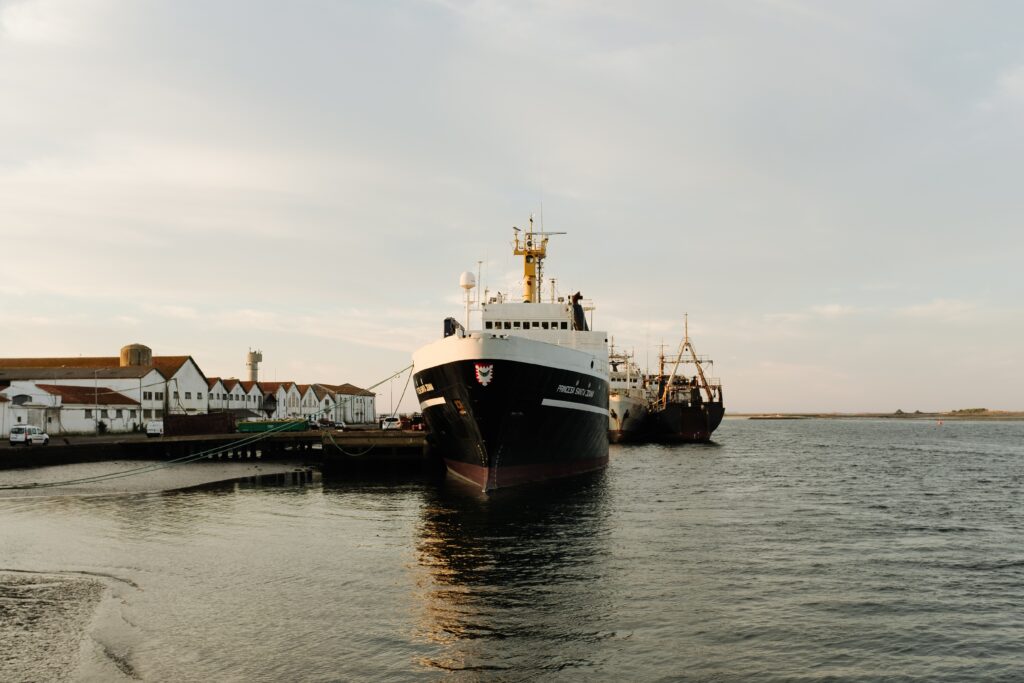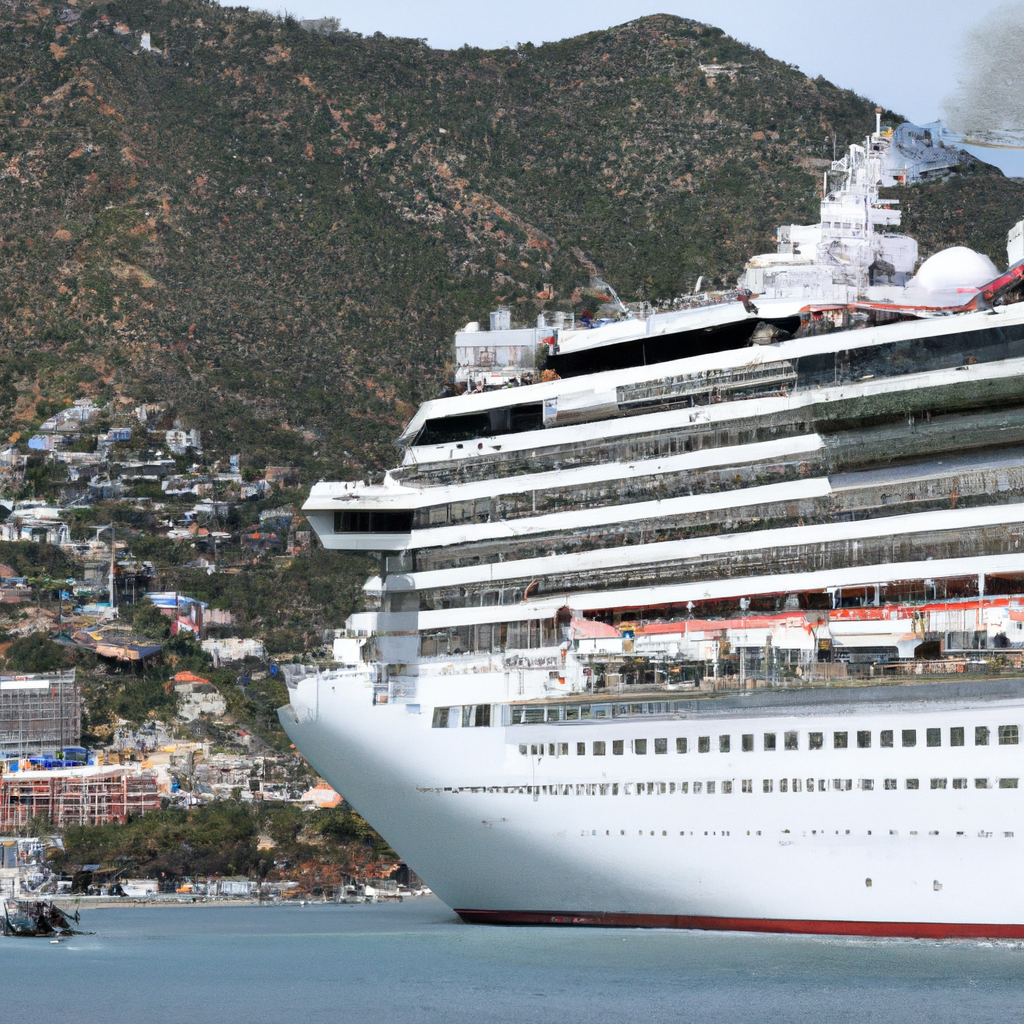
Have you ever wondered about the difference between a tender and a docked port? If so, you’re in the right place! In this article, we’ll explore the distinctions between these two types of ports and uncover their unique roles in the world of maritime travel. Join us as we unravel the mystery and gain a deeper understanding of these essential components of the sea-faring experience. Whether you’re a seasoned sailor or simply have a curious mind, this article is bound to pique your interest. So, let’s set sail on this informative voyage together!
Definition of Tender
A tender refers to a small boat or a shuttle used to transport passengers from a larger ship, which is anchored offshore, to the port. It serves as a means of transportation for passengers who wish to explore the destination without the need to bring the entire cruise ship into the port.
Explanation of a tender
When a cruise ship cannot dock directly at a port, it anchors a certain distance away from the shore. In such cases, passengers are transported to land using tenders. Tenders are usually smaller vessels that can navigate into shallow waters and reach the port’s designated landing area. They are equipped with seating, and sometimes even lounges and refreshments, to provide a comfortable experience for the passengers.
Characteristics of a tender
Tenders are designed to accommodate a specific number of passengers, ranging from smaller tenders that can carry around 100 passengers, to larger ones that can carry up to 500 passengers or more. They typically have a crew onboard to ensure the safety and smooth operation of the transfers. Tenders often operate on a scheduled basis, with designated departure and arrival times to and from the cruise ship.
Definition of Docked Port
A docked port, on the other hand, refers to a port where the cruise ship is able to directly berth at a pier or a dock, allowing passengers to embark and disembark directly from the ship at the port itself. This means that passengers have direct access to the port without the need for additional transportation methods like tenders.
Explanation of a docked port
In docked ports, the cruise ship is securely anchored to a pier or a dock, allowing passengers to simply walk on and off the ship. This convenience eliminates the need for tender transfers and makes it easier for passengers to explore the destination at their own pace. Docked ports are typically equipped with facilities and amenities to cater to the needs of cruise passengers, such as shops, restaurants, and transportation services.
Characteristics of a docked port
Docked ports are typically larger in size, capable of accommodating larger cruise ships. They have the infrastructure to handle the logistics of passenger embarkation and disembarkation efficiently. Docked ports often have customs and immigration facilities within the terminals, providing a seamless experience for passengers when going through the necessary procedures. Additionally, they may offer various services and activities directly at the port, allowing passengers to easily access entertainment, shopping, and shore excursions.

Location and Accessibility
Tender ports
Tender ports are usually located in areas where the water is too shallow or the port infrastructure cannot accommodate larger cruise ships. These ports are often found in remote or less developed destinations, offering unique experiences for passengers. While tender ports may be more secluded, they often provide a sense of exclusivity and a chance to explore lesser-known destinations.
The accessibility of tender ports can vary depending on the weather and sea conditions. In some cases, tender operations may be affected or even canceled due to rough waters, making it necessary for passengers to stay onboard the cruise ship. However, cruise lines and port authorities strive to ensure safe and efficient tender operations to minimize any disruptions.
Docked ports
Docked ports are generally located in areas with deep waters and well-developed port facilities. These ports are often found in popular cruise destinations and major cities, offering a wide range of amenities and attractions for passengers. Docked ports are easily accessible, allowing passengers to directly step ashore and explore the port city or its surrounding areas without any additional transportation.
The accessibility of docked ports is generally reliable, as cruise ships have regular schedules and arrangements with port authorities. Passengers can have peace of mind knowing that they can easily come and go from the ship at their convenience.
Transportation Method
Tender ports
As the name suggests, tender ports rely on tenders as the primary mode of transportation between the cruise ship and the port. Tenders are small boats or shuttles that ferry passengers back and forth from the ship. The tenders are often operated by the cruise line or contracted local operators, ensuring a high level of safety and service.
Passengers board the tenders from the cruise ship and are transported to a designated landing area at the port. The process typically involves queueing and assigned departure times to ensure an organized and efficient transfer. Once onshore, passengers can explore the port area or take organized shore excursions according to their preferences.
Docked ports
In docked ports, transportation between the cruise ship and the port is unnecessary as passengers can simply walk off the ship onto the port. This direct access allows passengers the freedom to explore the port city or its nearby attractions without any additional transportation arrangements.
However, some docked ports may still offer shuttle services within the port area, especially in larger ports where the ship may dock further away from the main attractions. These shuttles typically run on a scheduled basis, making it easy for passengers to visit key areas of interest before returning to the ship.

Vessel Size and Capacity
Tender ports
Due to the restrictions of shallow waters or limited port infrastructure, tender ports often accommodate smaller cruise ships. These smaller ships offer a more intimate and exclusive cruising experience, with passenger capacities ranging from around 100 to 1,000 passengers. The size of the tenders themselves can vary depending on the ship’s passenger capacity, with some tenders designed to carry a few dozen passengers while others can accommodate several hundred.
The limited size of the tender ports and ships creates a sense of coziness and allows for a close-knit community onboard. Passengers can easily interact with one another and develop a sense of camaraderie as they navigate through the unique experiences offered in these more remote destinations.
Docked ports
Docked ports generally cater to larger cruise ships with significantly higher passenger capacities, often ranging from a few thousand to over 5,000 passengers. The larger size of the cruise ship allows for a greater range of onboard amenities and entertainment options. These docked ports are capable of accommodating the size and requirements of these larger cruise ships, providing a seamless experience for passengers to come and go from the ship.
The larger scale of docked ports also opens up a wider range of activities and attractions within the port itself. From shopping and dining to cultural landmarks and historical sites, passengers have a diverse array of experiences right at their fingertips when visiting docked ports.
Time Efficiency
Tender ports
Tender ports often require more time for the transfer process due to the need to shuttle passengers between the cruise ship and the port. Depending on the number of passengers onboard the ship, tender operations may involve orderly queues and designated departure times to ensure a smooth transfer experience. While these measures are in place to maintain efficiency, the process can sometimes cause delays if passengers are not punctual or if tender operations are affected by external factors such as rough weather.
However, it is worth noting that tender ports can offer unique and picturesque approaches to the port, with tenders navigating through stunning coastal scenery. This scenic journey can add an extra element of excitement and anticipation for passengers as they approach their destination.
Docked ports
Docked ports generally provide a more time-efficient experience as there is no requirement for additional tender transfers. Passengers can disembark directly from the ship and start exploring the port city or participating in organized shore excursions without any delays or interruptions. The convenience of direct access allows for a more flexible and relaxed timetable, allowing passengers to make the most of their time ashore.
The time efficiency of docked ports can be particularly advantageous for passengers who wish to thoroughly explore a port city or take part in longer excursions that require more time. With the ship securely docked, passengers have the confidence of returning to the ship at their leisure, without any concerns about missing departure times.

Customs and Immigration Procedures
Tender ports
The customs and immigration procedures at tender ports can vary depending on the location and the regulations of the country. In some cases, passengers may need to go through customs and immigration procedures directly at the port’s landing area. This process ensures that passengers meet the necessary legal requirements to enter the destination. These procedures are usually straightforward, with immigration officers available to process passenger documentation efficiently.
However, it is important to note that tender ports, especially in remote or less developed destinations, may have limited customs and immigration facilities. In such cases, the cruise ship may facilitate the clearance process onshore, ensuring a smooth and expedited experience for passengers.
Docked ports
Docked ports typically offer more advanced and comprehensive customs and immigration facilities within the terminal buildings. Passengers can go through the necessary procedures, such as passport control and customs inspections, in a well-organized and hassle-free manner. With more resources and infrastructure available, docked ports can efficiently handle larger passenger volumes and ensure a smooth flow of people through the required checkpoints.
The dedicated customs and immigration facilities at docked ports enhance the overall efficiency and convenience for passengers, allowing them to quickly complete necessary procedures and begin enjoying their time ashore.
Security Measures
Tender ports
Tender ports have specific security measures in place to ensure the safety of both passengers and crew during the tende




